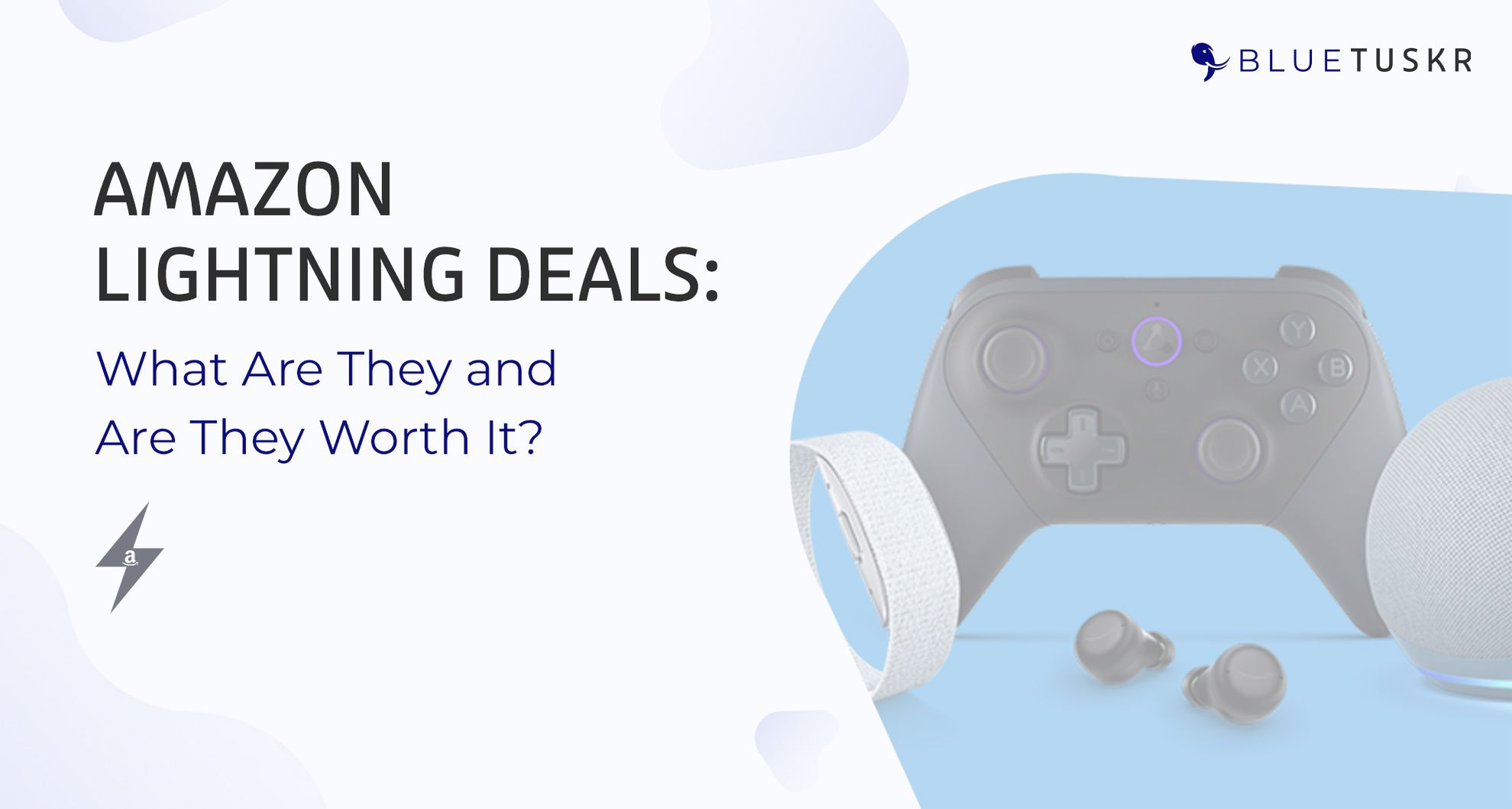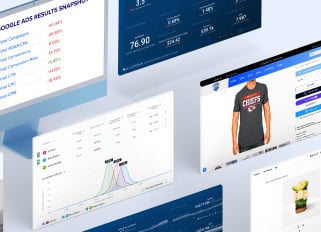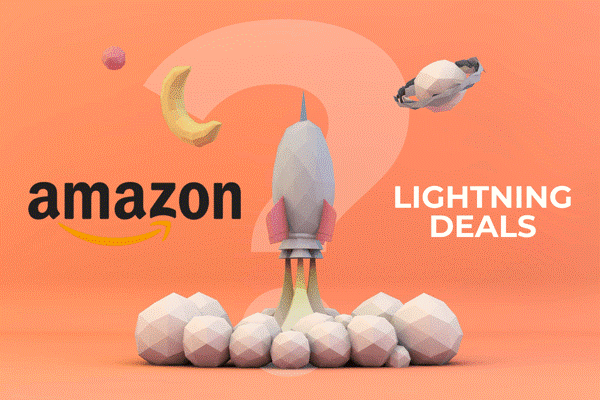
Are Amazon Lightning Deals Worth It? How to Get Them Right - Updated 2023
Don’t we all wish we could get an item for less than its actual price, whether online or offline? With 88% of shoppers reporting using coupon codes, you may be on a path to explosive sales with Amazon lightning deals. Do it wrong, and you will be on the losing end for selling items below their regular price.
Amazon lightning deals can boost sales and brand visibility, primarily when implemented on Black Friday or Prime Day. With the necessary application of at least a 15% discount, you will lose a significant chunk of your profits on the item. Hence, running the numbers and optimizing your lightning deals to appear on the first page is crucial.
Optimized offers appear on the Today’s Deals or Prime Day page. You don’t have to be a high-end professional seller to put them up in your online store. We’ve got everything you need to know about Amazon Lightning Deals and how to optimize them.
What to Know About Amazon Lightning Deals
Most sellers look to sponsored, product, or display ads to boost their brand visibility on Amazon. Others prefer offering promotional discounts on specific products to increase sales and maybe clear out old stock. They often avoid Amazon Lightning Deals because they involve losing a significant chunk of their profit margins.
In its simplest sense, an Amazon Lightning Deal is a limited-time promotional discount on an item. It runs for a few hours, usually less than a day, or until the stock runs out. Either way, the products don’t stay up for long, quickly giving way to others offering the same promotional discount.
Running Lightning Deals is often a risky move for most low-end sellers. Hence the question: are they worth it?
Our short answer is yes, but it is not that simple. Think about the promotional discount amount and how much of the original price is chopped away. That is not to scare you but to set you on the right path to make the most of these offers.
The Best Approach to Implementing Lightning Deals
Like paid advertising or any other marketing effort to boost visibility, approach matters. Amazon Lightning Deals do not require creating engaging content or ads. Instead, you want to pay attention to the following:
- Discount on the Lightning Deals products
- Optimization to appear on the first Lightning Deals page (organic ranking)
- Optimization to appear to the right customers
These limited-time promotions will rob you of profits. Yes, they can boost your sales velocity, but at what expense? You want to apply a significant discount to draw attention but not too much to lose your profit margins.
With that in mind, let’s explore the best approach.
Calculating Your Profit
One thing a professional seller does well is calculated profits. Running multiple Lightning Deals can look attractive, especially when buyers troop in for a purchase. However, you should be able to calculate profit from your Amazon sales history.
Here is a quick formula to calculate profit:
Gross profit = discount sales price on lightning deal item - deal fee - landing price
You cannot change the landing price or dealer fee with the above formula. Amazon has a fixed deal fee, regardless of the quantity, landing price, or including as many variations as possible. However, the Lightning Deal fees may vary based on time and marketplace. For example, hosting during peak shopping hours could cost more.
This formula is simple, but multiple offers can quickly become overwhelming. A Seller Central account will help you track your sales performance and other vital metrics. It can take a while to master Amazon Seller Central, but it is worth the effort.
Consider FBA fees if you are also an FBA seller. It will affect your gross profit per item sold.
Breaking Even
Ask yourself, "Do I need significant sales to break even?" You can determine how much you need to break even with a simple formula. Also, we assume you have a gross profit on the discounts, even with the discounted price and fee.
Amazon often charges $150 to run a typical Lightning Deal. The fee increases to $500 on Prime Day. Hence, you can calculate how many units you must sell to break even with the formula below:
Units to break even = Amazon fees / gross profit
Your units sold determine your overall profitability. However, it continues beyond deciding how many units you must sell. Here’s when to go back to your sales history.
How many units do you sell daily, weekly, and monthly as an Amazon seller? If your daily sales are less than the number of units you need to break even, you might reconsider running a Lightning Deal.
You can readjust the discounted price to require fewer units for break-even sales. However, you can only go as low as 15% to qualify. The minimum discount should be your guide when running a lightning deal.
How about leveraging Prime Day’s explosive sales? The 2022 Prime Day event resulted in the sales of 300 million items.
Remember that the fees to create a Lightning Deal on Prime Day are higher. You need more units to break even. Also, the promotion period might be two days, but Lightning Deals run on the Today’s Deals page for four to five hours.
Try the low-cost option unless it is a marketplace marketing strategy and you are not afraid to lose money. Focus on getting a good deal for your potential customers.
Types of Lightning Deals
You can add flexibility to your Amazon Lightning Deal by boosting its visibility. Two ways of doing this are via sponsored ads or price range.
Sponsored Ads
Sponsored ads get you a lucrative position on the Today’s Deals page.
However, keep in mind that sponsored ads come at a cost and should be used strategically. You can run them on a cost-per-click (CPC) basis (now may be the best time to get familiar with Amazon acronyms if you want to optimize your discounts). Sponsored ads offer higher visibility than organic rankings and are visible to everyone, including Prime members.
Price Range Offers
Let’s assume you have different variations of the product on the Amazon Lightning Deal. Instead of listing them with individual prices, you can use a price range to cover the costs of your product variations.
Prime Early Access Lightning Deals
Prime-eligible deals can appear on the Prime Early Access Deals. However, only Prime members can see them and purchase the product. Non-members must wait for the main event.
Creating Your First Lightning Deal
Now we’ve got the basics down on how Amazon Lightning Deals work and the best approach to maximize returns. Here’s what you must know if you believe they are worth the effort:
Eligibility
Most Amazon sellers can run Lightning Deals. However, the marketplace requires a few things before approving your offers. Here’s what is necessary for the sellers:
- You must be a professional seller (that is, have a professional seller account).
- Your store should have five seller feedback ratings monthly.
- Seller feedback ratings with at least 3.5 stars.
For eligible products, products must:
- Have a three-star rating or above.
- Be prime-eligible (Free Standard Delivery is available)
- Be new.
- Have as many variations as possible in the Lightning Deals menu.
- Be compliant with deal frequency policies.
- Be compliant with pricing policies.
- Have a low return rate.
Step-by-Step Guide on How to Create Amazon Lightning Deals
Follow the steps below:
1. Go to your Amazon Seller Central account and open the drop-down menu on the advertising tab. You can hover over the tab to bring out the menu.
2. Click “Deals.”
3. Click “New Deal.”
4. Pick a product from your store. Go to the Deals dashboard on the “Select Products” tab to pick eligible ASINs.
5. Add product variations.
6. Enter the schedule. Amazon will notify you via the Deals Dashboard a week before the lightning deal begins. You can also check “Upcoming Deals” to see your products.
7. Enter the deal price.
8. Enter committed units (minimum deal quantity) for the new deal.
9. Click “Submit.”
Amazon will review your lightning deal before approval. Also, live offers that fall short of the eligibility criteria will be removed.
Tips to Ace Lightning Deals
Here are some tips to help you maximize your chances.
- Ensure you have sufficient inventory to break even. You can use inventory management software if you have multiple products.
- Optimize your product listing. That includes product images, descriptions, bullet points, etc.
- Ensure you have the correct category.
- Engage these discounts when your product is most likely to be bought (shopping season).
Pros and Cons of Hosting Lightning Deals
Let’s wrap up with the pros and cons of these discount offers. They are as follows:
Pros
- Increased brand visibility
- Increased sales
- They can help clear out inventory
Cons
- Amazon decides the run time during the selected date range.
- Discounts must be at least 15%.

Conclusion
Amazon Lightning Deals can boost sales as online shoppers scour for better deals. However, with discounts comes the need to slash profits. It is better as a marketing strategy than a way to profit.
You need a professional seller account to run Lightning Deals on Amazon. Before making your decision, ensure you calculate your break-even sales first.
Interested in Amazon listing optimization services? Contact our team at Bluetuskr, an e-commerce marketing agency.
Connect With Us
Recent Post

.png)










Tell us what you think!